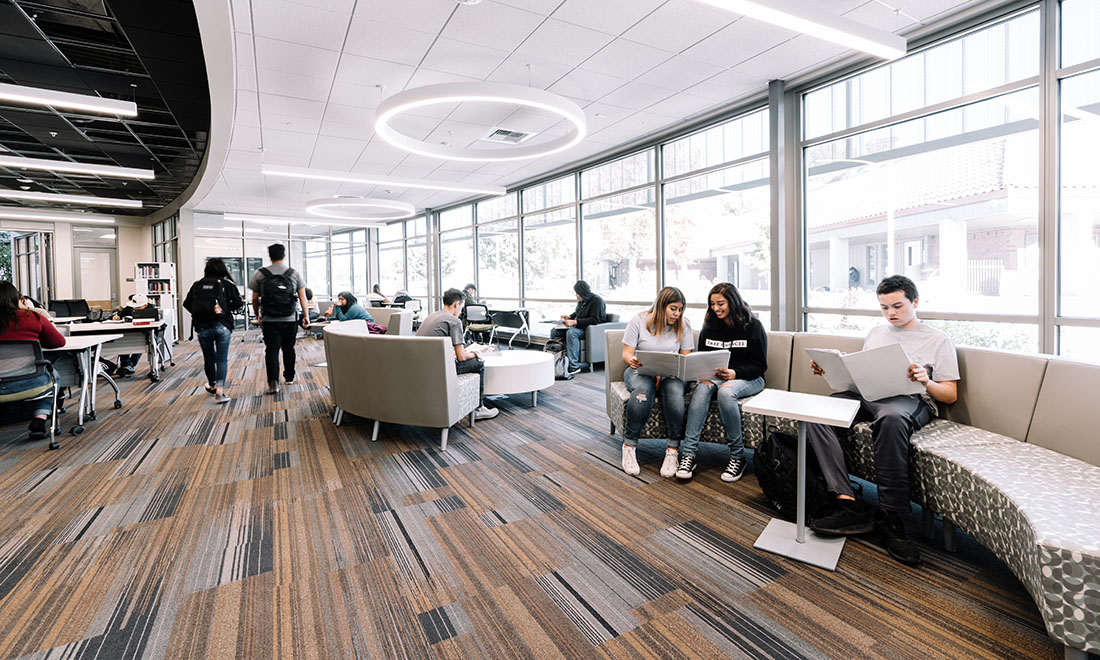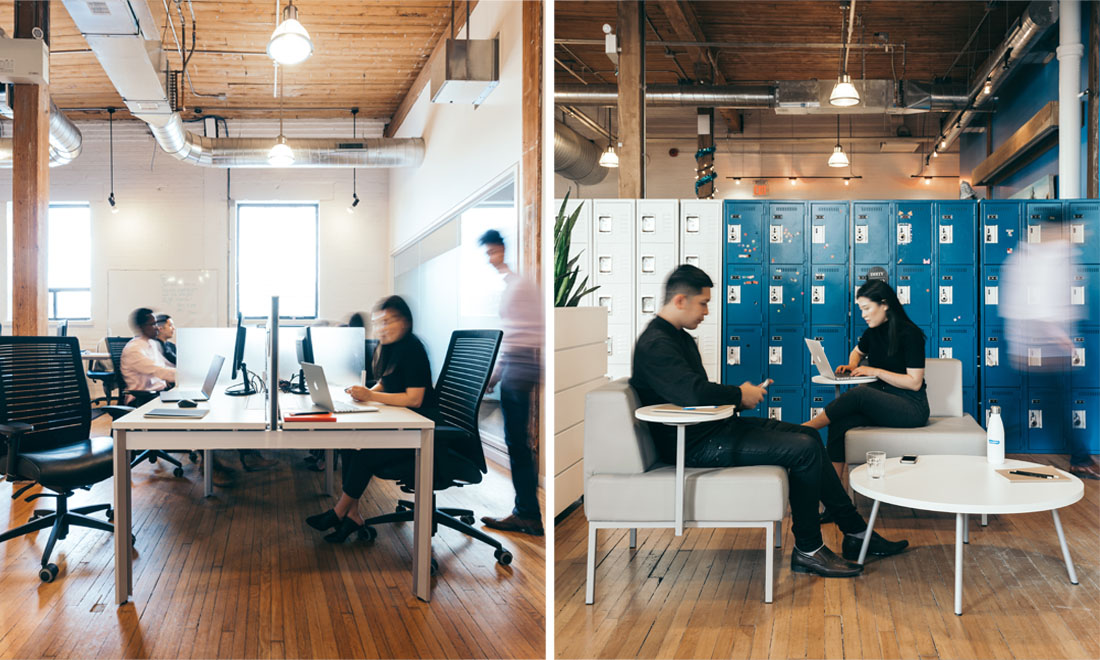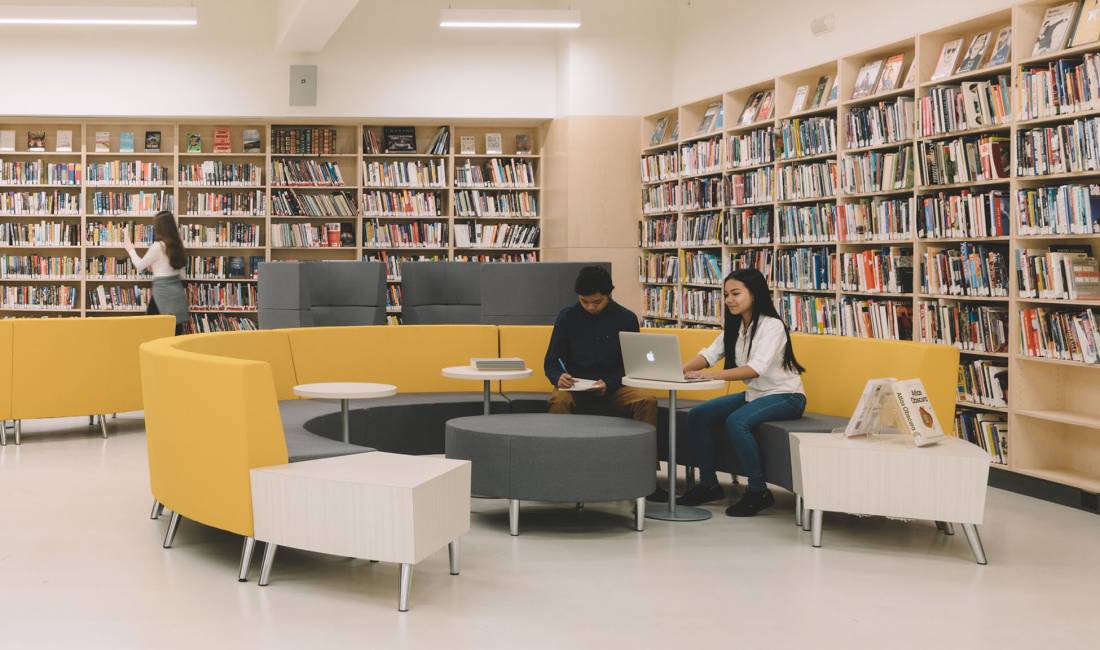Your office may be excluding the people you are trying to attract and retain: a look at Ambient Belonging and its impact on workplace design
Trend | November 08, 2022
An inclusive workplace values differences among individuals. It is a place where everyone feels welcome and accepted. A space where they can feel that they belong. As organizations and their employees place greater emphasis on EDIB (Equity, Diversity, Inclusion, and Belonging), how a space is designed becomes even more crucial to supporting these values.
Why is a sense of belonging important in the workplace?
As the conversation around belonging grows, one important aspect to consider is the concept of Ambient Belonging.
In an article published in the Journal of Personality and Social Psychology, the authors describe Ambient Belonging as the way in which design features (or cues) within the built environment send messages about who belongs, who is accepted, who is valued, and who is included.1

The study examined the impact of ambient belonging by mocking up two different tech office spaces for study participants to explore. One space was designed as a “stereotypical” tech space, which included sci-fi posters, video game consoles, and soda cans. The other space used more neutral-themed décor like nature artwork, books, and general interest publications alongside coffee mugs and water bottles.
Participants were asked to review each space and indicate which one they preferred to work in.
Ambient cues don't just deter people from underrepresented backgrounds from applying for particular jobs; they can also affect the quality of work within those jobs, as the energy that could be directed towards performance is spent worrying about 'fitting in.'
Results from this study showed that through simple design choices, office environments may unintentionally discourage people from feeling like they belong. For example, when choosing where they’d like to work, women were far less likely to choose the company with the “stereotypical” tech office. Why? The design led most women to question whether they would feel comfortable in a space that was perceived as male-centric.1
In other studies, researchers have shown that creating a sense of belonging in students increases motivation and improves academic performance.6 Applying this to the workplace, ambient cues don’t just deter people from underrepresented backgrounds from applying for particular jobs; they can also affect the quality of work within those jobs, as the energy that could be directed towards performance is spent worrying about “fitting in.”


The Student Union at Yerba Buena High School in San Jose creates a professional yet comfortable environment to help prepare its students for a successful future.
What are the characteristics of an inclusive workplace?
How can you create a sense of belonging when designing an office space?
To foster inclusiveness and connection, environmental psychologist William Ittelson envisions the planning of “perceptual neighborhoods,” where people can identify themselves as part of a community rather than being disconnected in the larger office space.5 The practice of designing designated areas for departments, teams, or activities within an office to build a sense of connection is an example of a perceptual neighborhood.

The head office for Homestars was furnished to provide employees choices for how they want to work.
Beyond space planning, it’s also important to support employees in how they want to work—to show that their needs are seen, valued, and met. This can include providing choice and flexibility within the design of the workspace, like quiet areas to focus and/or retreat to and more social areas to connect and interact. Integrating user-controlled elements for light and temperature can also empower employees in their own space. Additionally, respecting needs for privacy through visual and acoustic means—like insulated phone rooms and privacy screens—can further support individual needs and preferences.2,3
As employees demand more from their employers—design can be a powerful tool in supporting an organization's EDIB strategy.
Design consideration also needs to extend beyond furniture. For example, at the Harvard Kennedy School, Jane J. Mansbridge, a Professor Emerita at Harvard University, observed that 690 of the 750 portraits hung on Harvard’s walls featured white men. This led her to champion a movement to replace some with images depicting women and people of color. In diversifying its collection, the university recognizes that representation on its walls sends a strong message about who wields power and influence.4

All the portraits hanging on the walls inside the Louis Bornstein Family Amphitheater at Brigham Women’s Hospital in Boston on June 12, 2018, were men, nearly all white. Portraits have since been removed. || Pat Greenhouse/Boston Globe via Getty Images.
In the workplace, we must also contemplate the large design elements as well as the small. For example, how are the conference rooms named? Are they men’s names or sports terms or something neutral? Are restrooms only labeled men and women as opposed to including gender-neutral options?
Creating environments that support inclusion and belonging, where employees are engaged and valued, may now mean the difference between their resignation and retention. As employees demand more from their employers—design can be a powerful tool in supporting an organization’s EDIB strategy.
1Cheryan, S., Davies, P., Plaut, V. & Steele, C. (2009). Ambient Belonging: How Stereotypical Cues Impact Gender Participation in Computer Science. Journal of Personality and Social Psychology, Vol. 97, No. 6, 1045–1060. https://depts.washington.edu/sibl/Publications/Cheryan,%20Plaut,%20Davies,%20&%20Steele%20(2009).pdf
2KBS Insights (September 17, 2020). Designing Office Space for Inclusion and Equality. https://kbs.com/insights/designing-office-space-for-inclusion-and-equality/
3JLL (March 6, 2020) How companies are designing spaces that promote inclusivity and equality. https://www.jll.ca/en/trends-and-insights/workplace/how-companies-are-designing-spaces-that-promote-inclusivity-and-equality
4Ngo, Aimy (September 21, 2016). What signals is your office sending about who belongs? Paradigm. https://www.paradigmiq.com/2016/09/21/what-signals-is-your-office-sending-about-who-belongs/
5Groome, Amy (September 20, 2018). Anomie: Belonging by Design. Interior Architects. https://interiorarchitects.com/anomie-belonging-by-design/
6Walton, G., Cohen, G, Cwir, D. & Spencer, S. (2012). Mere Belonging: The Power of Social Connections. Journal of Personality and Social Psychology, 2012, Vol. 102, No. 3, 513–532. http://gregorywalton-stanford.weebly.com/uploads/4/9/4/4/49448111/waltoncohencwirspencer2012.pdf
Enjoy this article? Don't forget to share.






